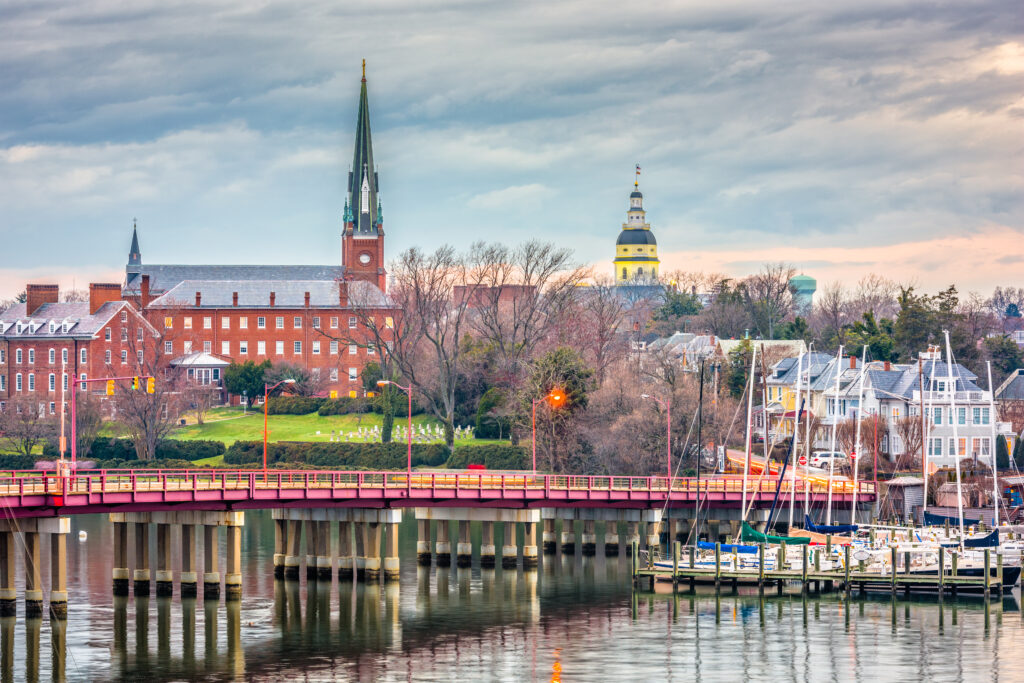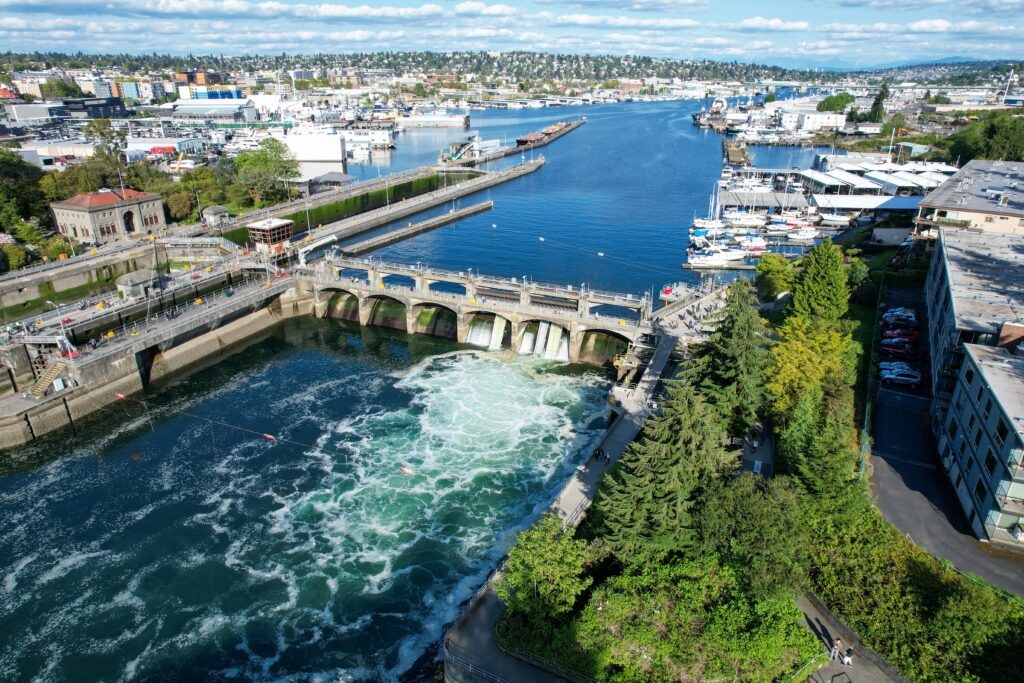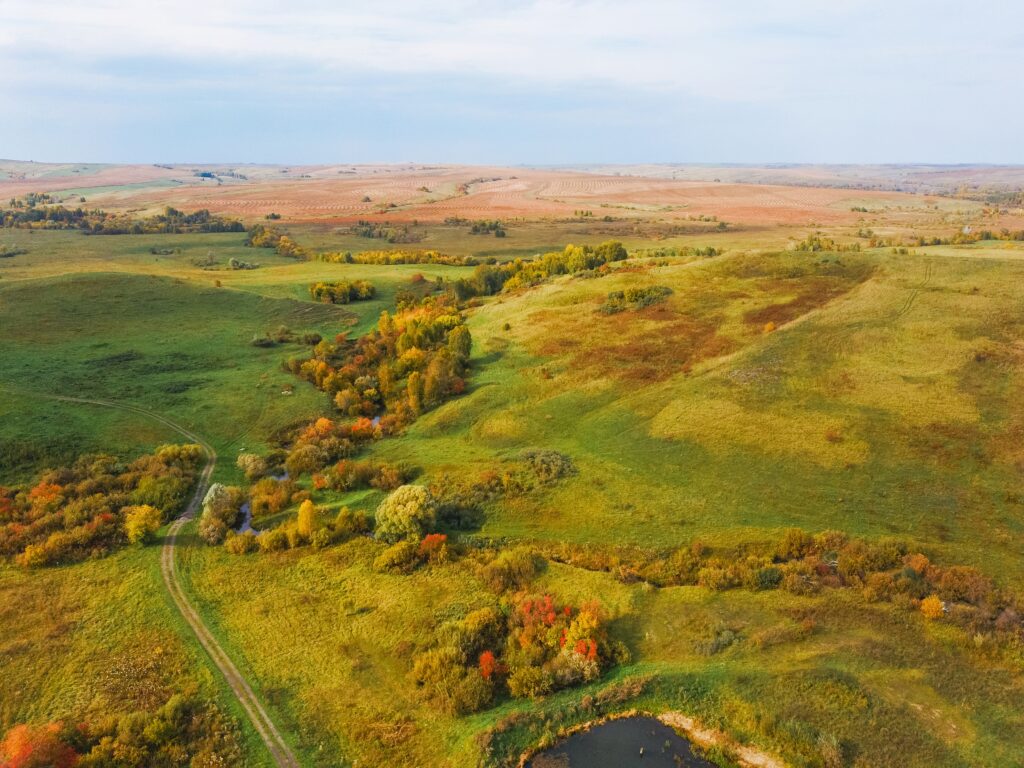Arab Immigrants in the USA: Navigating New Horizons and Cultivating Success in the American Tapestry
Rakwa – Embarking on a journey to a new country can be a formidable endeavor, one that presents a myriad of challenges, uncertainties, and opportunities. For Arab immigrants arriving in the United States, the tapestry of emotions is as rich and varied as the experiences that await them. In one breath, there is the tangible excitement of pursuing the American dream, the allure of broad horizons and the prospect of carving out a new life in a land renowned for its embrace of diverse cultures. Yet, in the next, there is the palpable apprehension that comes with leaving behind the familiar – family, friends, and the comforting embrace of one’s native culture.

The task of transplanting one’s life across continents is no small feat; it entails not only the physical relocation but also the cultural acclimatization that follows. New Arab immigrants find themselves navigating a complex web of decisions that extend beyond just finding a new home. They face the challenge of striking a balance between preserving their rich cultural heritage and assimilating into their new community. Moreover, they grapple with practical matters that are critical to establishing a foundation for their new lives, such as understanding local laws and policies, securing employment, accessing education, and ensuring the well-being of their families.
Amid these considerations lies a particularly consequential choice: determining which state in the United States will best serve as their new home. This decision is multifaceted and hinges on several key factors that, when carefully evaluated, can significantly influence their quality of life and potential for success in this new chapter. It’s about finding a place that not only offers the promise of prosperity and growth but also holds a space where cultural traditions can be nurtured and where communities are not just tolerant but welcoming of diversity.
For Arab immigrants, settling into a state that offers a supportive network can be a lifeline as they build their new lives. The presence of established Arab communities can provide a cushion of comfort and camaraderie in an otherwise unfamiliar environment. Furthermore, navigating the intricate American legal system and immigration policies becomes less daunting with access to knowledgeable resources and experienced advocates.
With this in mind, it becomes clear that the process of selecting the right state is not one to be taken lightly. It requires a thoughtful examination of what each state can offer in terms of immigrant-friendly policies, economic opportunities, community support, and overall quality of life. By delving into these aspects and considering the unique needs and aspirations of each individual or family, Arab immigrants can make an informed choice that aligns with their goals and facilitates a smoother transition into American society.
As we proceed, we will explore what constitutes immigrant-friendly policies, a vital foundation for any immigrant navigating their new environment. These policies go beyond the basic legality of immigration status; they encompass the ethos of inclusion, the availability of support services, and the presence of frameworks that enable immigrants to thrive. Understanding these policies, and how they manifest in different states, is essential in laying the groundwork for a successful integration into American life.
Understanding Immigrant-Friendly Policies

Immigrant-friendly policies are foundational when determining which state in the United States will be the most welcoming and supportive for new Arab immigrants. Such policies create an environment that is not only legally accepting but also culturally inclusive. States that offer a comprehensive array of immigrant-friendly policies ensure that immigrants have access to necessary resources, legal protection, and opportunities that facilitate their integration into society.
The immigrant-friendly policies can be categorized into various sectors such as legal aid and support, healthcare access, educational opportunities, civil rights, and employment rights. Each state varies in the degree to which these policies are implemented and the broadness of their scope.
Legal aid is a significant aspect of immigrant-friendly policies. Some states, like New Jersey, have implemented programs to provide legal assistance to immigrants facing deportation or requiring help with their visa applications. For example, the New Jersey Universal Representation program offers free legal services to low-income immigrants. In California, the Immigrant Legal Resource Center works to improve the lives of immigrants and create a more inclusive society through policy advocacy, education, and legal services. On the legal front, Maryland and New York also stand out for providing access to legal counsel in immigration proceedings.
Access to healthcare is another important consideration. States such as California and New York have made strides in providing healthcare services to immigrants regardless of their legal status. These policies ensure that basic medical care is accessible, which is especially vital for families with children. California’s Medi-Cal program, for instance, has been expanded to cover all low-income children under 19, regardless of their immigration status.
Education policies that allow children of immigrants to thrive are also a hallmark of immigrant-friendly states. Some states, like Texas, have policies that permit all residents, regardless of immigration status, to pay in-state tuition at public universities, significantly reducing the cost of higher education for immigrant families. Moreover, the Minnesota Dream Act provides financial aid to immigrants to attend colleges and universities within the state.
States with strong civil rights protections for immigrants allow them to live without the constant fear of discrimination or unfair treatment. For example, Washington and Illinois have enacted anti-discrimination laws that protect the rights of immigrants at the workplace and in their daily lives. Illinois, in particular, has the Illinois Trust Act which limits local law enforcement’s cooperation with federal immigration authorities, thereby reducing the risk of deportation for immigrants without affecting public safety.
Employment rights are also a critical element of immigrant-friendly policies. Some states have specific protections for immigrant workers to ensure they are paid fairly and are not exploited due to their immigration status. California has robust labor laws that apply to all workers, including undocumented immigrants, providing them with the right to a minimum wage, overtime pay, and protection from workplace retaliation.
Furthermore, states like Maryland have passed the Dignity Not Detention Act, which restricts the expansion of immigration detention facilities and the ability to detain immigrants for civil offenses. These policies show a commitment to treating immigrants with respect and upholding their dignity.
When assessing community support, the presence of Arab communities and organizations that offer cultural and linguistic services is an important consideration. States with significant Arab-American populations, such as Michigan and New Jersey, often have community centers, cultural festivals, and business associations that provide Arab immigrants with a sense of community and belonging. They also act as advocacy groups, representing Arab-American interests at the local and state level, ensuring that policies continue to reflect the needs of the community.

In the context of recent developments, it’s also essential to note the impact of technology and advocacy in shaping immigrant-friendly environments. With the increasing use of digital platforms, states with proactive immigrant support networks actively engage in online information dissemination and service provision to make resources more accessible to new Arab immigrants. States with active social media campaigns and well-maintained websites, such as California’s Immigrant Guide and New York’s Office for New Americans, provide a wealth of information that can be easily accessed by newcomers seeking guidance and support.
Given the nuances and complexities involved in each state’s approach to immigrant-friendly policies, Arab immigrants must thoroughly research and understand the specific benefits, protections, and opportunities available in various states. This will allow them to make an informed decision that will facilitate a smoother transition and a more secure foundation for their future in the United States.
Moving beyond the realm of policy and into the practical implications of economic stability, it is now pertinent to shift our focus to evaluating economic opportunities across different states in the US. Economic prospects can vary widely from state to state based on local job markets, cost of living, and the potential for business growth, all of which are essential for the long-term success and well-being of new Arab immigrants seeking to make the United States their new home.
Evaluating Economic Opportunities
When considering resettlement in the United States, economic opportunities stand as one of the most crucial factors for new Arab immigrants. The ability to secure stable employment, access to entrepreneurial ventures, and a general economic atmosphere that is conducive to growth and prosperity can significantly impact the successful integration and long-term well-being of immigrants.
Labor Market Dynamics
Understanding the labor market dynamics of a state is fundamental when evaluating economic opportunities. The unemployment rate is a basic indicator, but it only paints a part of the picture. For a more comprehensive view, one should consider the job growth rate, the diversity of industries, the presence of employers seeking skills that match those of the immigrants, and the stability of these jobs over time. States with diverse and growing industry sectors, such as technology, healthcare, and engineering, are often more promising for job seekers.
For example, California’s Silicon Valley is renowned for its technology sector and may offer vast opportunities for Arab immigrants with expertise in IT and software development. Similarly, Texas, with its booming energy sector and pro-business policies, can provide opportunities in fields such as engineering and geosciences.
Cost of Living and Wages

While job availability is crucial, the cost of living in a state can impact an immigrant’s ability to thrive. States with a high cost of living, like New York or California, may offer higher wages but can also lead to a greater financial burden when it comes to housing, utilities, and healthcare. Conversely, states like Nebraska and Idaho may have a lower cost of living, which could make them attractive to those who value financial stability and a more modest lifestyle.
Average wages across different industries in a state also inform the potential quality of life one can expect. It’s beneficial to compare these wages against the cost of living indices to gauge the economic practicality of living in that state. For instance, the decision to move to New Jersey could be influenced by its high median household income relative to regional costs.
Entrepreneurial Environment
For Arab immigrants with entrepreneurial ambitions, it’s critical to consider the business climate of a state. This includes the ease of starting a business, access to capital, regulatory environment, and the state’s track record of supporting small and medium-sized enterprises. States like Utah and New Hampshire are recognized for their business-friendly environments, which might be enticing for immigrants wanting to establish their own ventures.
Additionally, some states offer specific programs and incentives to encourage immigrant entrepreneurs, such as business incubators, networking events, and financial grants. These programs can be instrumental in helping new businesses overcome initial barriers to entry and finding a foothold in the market.
Employment Law and Worker Protections
Worker rights and protections are significant aspects of the economic landscape. States with strong labor laws can provide a more secure working environment. Protection against unlawful discrimination, assurance of a minimum wage, and safety regulations are critical components of a supportive labor framework. California, for example, has enacted some of the most stringent worker protection laws in the country, which could be a decisive factor for those concerned about workplace rights.
Economic and Job Market Data Sources
New Arab immigrants can access a wealth of information to make informed decisions about their potential economic prospects. The U.S. Bureau of Labor Statistics (BLS) provides comprehensive data on employment, wages, and projections, which can help gauge the health of a state’s job market. For example, the BLS’s “Economy at a Glance” reports give insights into statewide economic conditions, while their state-specific “Labor Force Statistics” offer detailed analysis of employment trends.
Moreover, each state’s Department of Labor website contains localized employment data and resources. Websites like the California Labor Market Information Division, New York State Department of Labor, or the Texas Workforce Commission are invaluable for understanding the economic landscape in these states.
Community Economic Support
The presence of a supportive Arab community can also aid in economic integration. Community organizations often provide networking opportunities, mentorship, language assistance, and other resources that can help new immigrants navigate the job market or start a business. The Arab American Institute and various local community centers are good starting points for networking and seeking economic advice tailored to the Arab immigrant experience.
Adapting to Market Needs
Lastly, immigrants should consider how their own skills and experience fit within the economic landscape of a state. States with industries that have a demand for specific skill sets relevant to the immigrant’s background may offer more opportunities for employment. This could mean looking into states with burgeoning tech sectors, healthcare systems, academic institutions, or other industries related to the immigrant’s professional expertise.
When considering economic opportunities as a new Arab immigrant, it’s not solely about finding a job; it’s about finding a place where one can grow, contribute, and build a sustainable future. The decision must factor in personal ambitions, career goals, family needs, and the broader economic indicators mentioned. Each state presents unique opportunities and challenges, and it’s vital to thoroughly research and weigh these against individual circumstances to make the best possible choice for a prosperous life in the USA.
Identifying Community Support and Arab Presence

Identifying Community Support and Arab Presence
For new Arab immigrants, settling into a state with a substantial Arab presence can provide immediate community support, cultural familiarity, and social networking opportunities that are invaluable during the integration process. These established communities often have organizations, cultural centers, and business associations that can assist with everything from language translation services to finding employment.
States with Sizeable Arab Communities
The United States is home to a diverse and widespread Arab population. Certain states, however, stand out for their sizeable Arab communities, which provide a network of support that can make the transition to American life smoother for new arrivals.
Check the Arab American Organizations in your Area
California: With its vast and diverse population, California has one of the largest Arab American communities in the United States. It’s home to many immigrants from Lebanon, Egypt, Syria, and other Arab nations. The Arab American Civic Council, located in Anaheim, and the Arab Cultural and Community Center in San Francisco are two prominent organizations that offer a range of services, from cultural events to advocacy and education.
Michigan: Particularly noteworthy is the community in and around Dearborn, which has one of the highest concentrations of Arab Americans in the country, predominantly of Lebanese, Iraqi, Yemeni, and Palestinian heritage. The Arab Community Center for Economic and Social Services (ACCESS) is a leading institution providing social, economic, health, and educational services to the Arab American community in Michigan.
New York: The state of New York, and specifically New York City, boasts a dynamic Arab American community with immigrants from across the Arab world. This diverse population is supported by organizations such as the Arab American Association of New York, which offers services like immigration support, English as a Second Language (ESL) classes, and youth development programs.
Texas: While Texas is known for its Hispanic heritage, it also has a significant Arab population, with Houston and Dallas being central hubs. The Arab American Cultural & Community Center in Houston serves as a focal point for cultural, educational, and recreational activities.
Illinois: Chicago is the heart of Illinois’ Arab American community, where organizations such as the Arab American Family Services in Bridgeview offer a wide range of assistance, including cultural programs, counseling, legal aid, and youth initiatives.
New Jersey: This state is known for its vibrant and diverse Arab American population, with strong communities in cities like Paterson and Jersey City. The American Arab Forum and various mosques and cultural centers provide platforms for cultural exchange, networking, and support services.
Ohio: With a growing population of Arab Americans, particularly in the Cleveland and Columbus areas, Ohio hosts several community organizations, such as the Arab American Community Center for Economic and Social Services (AACCESS-OHIO), which focus on advocacy, youth programs, and cultural outreach.

Massachusetts and Pennsylvania: Both states have a long history of Arab immigration and boast established communities offering robust support networks. Organizations such as the Center for Arabic Culture in Massachusetts and Al-Bustan Seeds of Culture in Pennsylvania focus on promoting Arab culture and language, which helps new immigrants maintain a connection with their heritage.
Virginia: The state, and especially the Northern Virginia region near Washington, D.C., has seen a rise in its Arab population. The Arab American Institute, headquartered in the nation’s capital, provides resources and advocacy for Arab Americans, and influences policy and legislation relevant to the community.
Minnesota: Minneapolis-Saint Paul has a significant Somali and Arab population, with community resources like the Confederation of Somali Community in Minnesota and the Arab American Association of Minnesota offering support in areas like education and health.
Community Support Services
These states, with their significant Arab American populations, offer an array of community support services that are essential for new immigrants. Common services provided by various Arab American community centers and organizations include:
- Cultural Integration: Programs aimed at celebrating Arab heritage, festivals, and cultural practices, which help maintain cultural identity while adapting to American life.
- Education: ESL classes, scholarship programs, and educational workshops are regularly offered to help immigrants with language barriers and to advance their academic qualifications.
- Legal and Immigration Assistance: Many community organizations have legal services to help with visa applications, citizenship processes, and other immigration-related issues.
- Employment Services: Job training, employment search assistance, and career counseling are crucial for new immigrants to find work and become economically self-sufficient.
- Health Services: Access to culturally sensitive healthcare, including mental health services, is available to address the health needs of the community.
- Youth Programs: Focused on the younger members of the community, these programs range from academic tutoring to sports and recreational activities, helping children and teenagers integrate into their new environment.
- Networking and Mentorship: Establishing connections with established Arab Americans can lead to mentorship opportunities and invaluable guidance in navigating American society.
While not exhaustive, this snapshot of community support highlights the benefits of living in states with significant Arab American populations. These community resources help mitigate the challenges faced by new immigrants, providing them with a supportive environment conducive to their success and well-being in the USA. Moving on from community support, the overall quality of life in a state is another critical consideration for new Arab immigrants…
Quality of Life Indicators
Quality of Life Indicators
When new Arab immigrants choose a state to live in within the United States, factors that indicate a high quality of life play a critical role. These indicators not only encompass the essentials of living comfortably but also the cultural, social, and environmental aspects that contribute to a sense of well-being. Evaluating these factors is crucial for immigrants to ensure that their new environment aligns with their needs and aspirations. Below, we explore the components that collectively define the quality of life in a state and how they pertain specifically to the selection process for Arab immigrants.

Health Care Accessibility and Quality
Access to quality health care is a primary concern for anyone moving to a new country. For Arab immigrants, states that provide comprehensive healthcare services, including preventative care, treatment, and emergency services, are highly attractive. It’s essential to consider both the availability of medical facilities and the cultural competence of healthcare providers. States with a significant Arab American presence often have medical professionals who are culturally sensitive and perhaps even linguistically matched, making healthcare experiences more comfortable for Arab families.
Educational Excellence
Education is another cornerstone of quality of life. States that offer high-quality education at all levels—from primary schools to universities—are more likely to attract and retain immigrant families. Educational opportunities don’t just include the formal curriculum but also extracurricular activities, language support for non-native English speakers, and programs that promote cultural diversity. For families, the presence of schools that facilitate bilingual education and celebrate multiculturalism might be particularly appealing.
Economic Stability and Job Market
Economic opportunities greatly impact an immigrant’s ability to thrive in their new country. States that boast a robust economy with diverse job sectors offer more employment opportunities, which is vital for financial stability and upward mobility. States with low unemployment rates and a healthy job market in areas such as technology, healthcare, engineering, and business are often high on the list for immigrants looking for work. Additionally, states with supportive programs for starting businesses can be appealing for entrepreneurial immigrants.
Safety and Public Services
The safety of a state is typically measured by its crime rates and the effectiveness of its public services, including law enforcement and emergency response systems. Feeling safe in one’s community is essential for a family’s peace of mind. Arab immigrants, like all newcomers, will look for states where they can feel secure in their homes and their children can play freely outside. Public services that are responsive and well-maintained also contribute to a state’s livability.
Affordable Cost of Living
The cost of living is how much it costs to afford basic expenses such as housing, food, taxes, and healthcare. States with a lower cost of living allow immigrants to make the most of their income and save for the future. However, a low cost of living should be balanced against job availability and wages; states with very low living costs might also have fewer job opportunities or lower average salaries.
Cultural and Recreational Activities
Cultural inclusivity is paramount for immigrants who wish to maintain their heritage while assimilating into American culture. States that offer cultural events, community centers, and activities that cater to diverse populations, including Arab Americans, help to promote a sense of belonging and community. Recreational facilities like parks, museums, and theaters not only contribute to the cultural fabric but also provide spaces for relaxation and family time, which are invaluable for well-being.
Environmental Quality
The natural environment of a state, including its air and water quality, climate, and availability of green spaces, can greatly influence quality of life. States with cleaner environments are more conducive to a healthy lifestyle. Additionally, states that experience a moderate climate might be preferred by immigrants who are not accustomed to extreme weather conditions.
Transportation and Infrastructure
A state’s transportation network and infrastructure efficiency affect daily life significantly. Good public transportation systems, well-maintained roads, and modern utilities all contribute to the ease with which an individual can navigate their community and access services. For immigrants who may initially rely on public transport, states with developed infrastructure will offer better mobility and convenience.
Political Climate and Social Policies
The political environment and social policies of a state can affect immigrant populations profoundly. States that have inclusive policies and a reputation for protecting the rights of minorities may offer a more welcoming atmosphere for Arab immigrants. It is also important for immigrants to consider the state’s stance on immigration and its efforts to integrate and support immigrant communities.
Social Support Networks
Lastly, a strong social support network can significantly enhance the quality of life for new Arab immigrants. This can include community groups, religious organizations, and NGOs that offer support ranging from language assistance to employment services. States that have well-established Arab American communities can provide a network of support that helps with the transition into a new society.
Moving forward, each of these quality of life indicators plays a crucial role in determining the suitability of a state for new Arab immigrants. With these considerations in mind, a comparison of specific states such as New Jersey, Maryland, Texas, New York, California, Utah, Washington, Idaho, Nebraska, Minnesota, and New Hampshire will offer deeper insights into where an immigrant might find the most balanced and fulfilling life. Arab immigrants considering these states will need to balance their personal, professional, and community needs against the backdrop of what each state can offer. As we delve deeper into comparative analysis, we will consider each state’s unique offerings and challenges…
Comparative Analysis of Top States
Comparative Analysis of Top States
New Jersey

New Jersey stands out for its immigrant-friendly environment, boasting robust immigrant legal support through organizations such as the American Friends Service Committee. It is one of the states with a high percentage of foreign-born residents, ensuring a diversity-rich environment. Economically, the Garden State has a high median household income, which indicates potential for financial stability, although the cost of living is also on the higher end. New Jersey’s job market is bolstered by industries like pharmaceuticals, finance, and telecommunications.
The presence of a significant Arab community, particularly in cities like Paterson and Jersey City, offers a reassuring cultural anchor for new immigrants. New Jersey’s health care system is ranked highly and is complemented by top-rated schools such as Princeton and Rutgers Universities. Despite its densely populated areas, New Jersey offers ample suburban and coastal living options, presenting a balanced lifestyle that combines urban amenities with quieter residential areas.
Maryland

Maryland provides a unique blend of Southern charm and Northern pragmatism, with progressive policies that tend to favor immigrants. The state’s economy is anchored by high-tech sectors, life sciences, and federal agencies, given its proximity to Washington, D.C. Maryland’s median household income is among the highest in the country, paired with an average cost of living.
The state has seen a growing Arab American community, especially in the Baltimore area, providing cultural solidarity and community support. Maryland ranks highly in education, with excellent schools and universities, such as the University of Maryland and Johns Hopkins University. Its health care system is innovative, particularly due to the presence of world-renowned health institutions like Johns Hopkins Hospital. The state offers a variety of environments, from the bustling Baltimore to the scenic views of the Chesapeake Bay.
Texas

Texas is known for its relaxed stance on regulation and taxation, making it an attractive state for businesses and individuals seeking economic opportunities. The state’s job market is booming, particularly in the energy, technology, and healthcare sectors. The cost of living in Texas is relatively low, providing an advantage for those looking to maximize their budgets.
The Arab community in Texas, although not as large as in some other states, is vibrant and growing, with concentrated populations in cities like Houston and Dallas. Texas offers a variety of cultural experiences and is home to many top-rated universities, including Rice University and the University of Texas system. The quality of life in Texas is bolstered by its vast open spaces, affordable housing, and a variety of cultural and recreational activities. However, newcomers may need to acclimate to the state’s hot climate.
New York

New York State, particularly New York City, is the epitome of the American melting pot, with a long history of embracing immigrants from around the world. The state’s economy is one of the largest and most diverse, with industries ranging from finance and media to technology and manufacturing. The cost of living is high, particularly in New York City, but so are the wages.
The Arab American community is well-established, particularly in areas of Brooklyn and the Bronx, providing strong cultural and religious networks for newcomers. New York boasts an extensive public transportation system, world-class healthcare institutions, and a plethora of educational opportunities, including Columbia University and New York University. While the bustling city life defines much of the state, there are also quieter areas in Upstate New York that offer a slower pace of life.
California

California’s reputation as a hub of innovation and opportunity is well-earned. The state’s economy is the largest in the United States and offers a wide array of job opportunities, especially in technology, entertainment, and agriculture. While the cost of living, especially in cities like San Francisco and Los Angeles, can be prohibitive, the state also offers areas with more affordable living options.
The state is known for its warm welcoming of immigrants and boasts one of the largest Arab American populations in the country, with strong communities in places like Orange County and the Bay Area. California leads in health care innovation and access, with world-class institutions such as UCLA and UCSF, and in education with top universities like Stanford and the California Institute of Technology. The state’s natural beauty, with its beaches, mountains, and forests, provides a stunning backdrop for residents, though it’s worth noting that environmental concerns such as wildfires are also a reality.
Utah

Utah may come as a surprise to some as an attractive destination for Arab immigrants. The state is consistently ranked high in terms of economic stability and offers a low cost of living. Utah’s economy is thriving, with a strong presence in information technology, mining, and tourism. The job market is buoyant, with low unemployment rates.
Utah’s Arab community is smaller than those in coastal states but is growing, particularly in the Salt Lake City area. The state places a strong emphasis on family values, which might appeal to Arab immigrants looking for a family-oriented environment. Utah is known for its natural beauty, offering a wealth of outdoor activities. The state also boasts a high level of public safety and an educational system that includes respected institutions like Brigham Young University and the University of Utah.
Washington

Washington State offers a strong economy, particularly in the technology and aerospace industries, with giants like Microsoft and Boeing headquartered here. The job market is healthy, and while the cost of living in the Seattle area can be high, other parts of the state offer more affordable living.
Washington has a growing Arab American population, particularly in the Seattle area, which boasts several cultural organizations and mosques. Education is a strong suit with top universities like the University of Washington. The state also ranks well for health care and offers a natural environment that is hard to beat, from the rainforests of the Olympic Peninsula to the arid regions of Eastern Washington.
Idaho

Idaho is an emerging state for immigrants, offering a lower cost of living and an increasing number of job opportunities, particularly in agriculture, manufacturing, and technology. The state has a small but growing Arab community and is known for its welcoming and friendly atmosphere.
Education options include respectable institutions like Boise State University. Idaho’s appeal lies in its tranquil lifestyle, ample outdoor recreation opportunities, and its reputation as one of the safest states in the country. The state’s natural beauty, from the wilderness areas to the Snake River Plain, is ideal for those who cherish the outdoors.
Nebraska

Nebraska’s economy is primarily driven by agriculture, but it’s also home to several Fortune 500 companies which provide diversified job opportunities. The cost of living is low, and the state is known for its friendly communities and conservative values.
The state has a small Arab American population with room for growth and potential community support in cities like Omaha. Educational institutions like the University of Nebraska offer solid academic options, and the state’s healthcare services are reliable, although perhaps not as advanced as coastal states. Nebraska offers a quiet, family-friendly environment, with Omaha providing more urban amenities.
Minnesota

Minnesota is known for its progressive policies and quality of life, with a strong economy anchored by industries such as medical devices, retail, and agriculture. The cost of living is reasonable, and the state has a well-developed social safety net. Minnesota’s job market is robust, with a low unemployment rate.
The state has an established Arab community, particularly in the Twin Cities area, which is a draw for new immigrants seeking cultural connections. Education is a priority, with excellent public schools and universities such as the University of Minnesota. Minnesota is renowned for its healthcare system, with the Mayo Clinic being a world leader. The quality of life is high, although the cold climate might be a consideration for those not accustomed to harsh winters.
New Hampshire

New Hampshire offers a unique blend of New England charm and a live-free-or-die attitude that translates into minimal government intervention and no state income tax. The economy is strong, with growth in high-tech and manufacturing sectors, and the cost of living is moderate.
The state has a smaller Arab community, but it is supportive and growing, especially in Manchester and Nashua. Education is valued with good public schools and institutions like Dartmouth College. Healthcare quality is high, and residents enjoy a variety of outdoor activities due to the state’s beautiful landscapes. New Hampshire’s quiet, rural character, combined with proximity to urban centers like Boston, makes it an attractive option for those seeking balance.
Final Considerations
Each state offers a unique set of advantages and challenges for Arab immigrants, and the decision on where to settle involves weighing these factors against personal preferences and goals. The economic stability, presence of Arab communities, quality of health care and education, and overall cost of living are key considerations that will vary in importance depending on individual circumstances. Those looking for vibrant, diverse urban environments might lean towards states like New York or California, while those seeking quieter, more affordable living might consider states like Idaho or Nebraska. Ultimately, the best state for new Arab immigrants is one that provides the right blend of opportunity, community, and quality of life to meet their specific needs.
Personalizing Your State Choice
When embarking on the journey to a new life in the United States, Arab immigrants must consider not only the broad factors of immigrant-friendly policies, economic opportunities, community support, and quality of life, but also how personal factors interplay with these elements. Personal ambitions, family commitments, and educational pursuits should be at the forefront of this crucial decision, guiding new arrivals to a state that aligns with their individual life plans.
Career Goals Many immigrants arrive in the U.S. driven by professional aspirations. For those with a clear career path in mind, it’s essential to match their professional objectives with the economic landscape of a potential new home. For instance, tech professionals might gravitate towards California’s Silicon Valley, or Washington where technology giants like Microsoft have a strong presence. Similarly, those in the finance sector often find New York’s bustling markets irresistible, whereas individuals interested in the oil and energy sectors might look towards Texas.
Yet, the alignment of professional ambitions doesn’t end at the industry level. Consider the opportunities for advancement, the presence of professional networks, and the entrepreneurial ecosystem that could support starting a new business. States such as Utah and Idaho have been heralded for their growing economies and business-friendly environments, which might appeal to Arab entrepreneurs looking to launch startups or expand businesses.
Family Ties For Arab immigrants with family considerations, prioritizing states with a strong Arab presence can provide invaluable support. States like New Jersey and Michigan offer not only a sense of community but also access to cultural touchstones such as mosques, Arab cuisine, and community centers which can greatly ease the transition and help maintain cultural ties.
Families with children must also weigh educational opportunities heavily in their decision-making process. States that are renowned for their educational systems, such as Minnesota with its highly regarded public schools, or California and New York, home to prestigious universities, can be particularly appealing. Furthermore, some states, like New Hampshire and Utah, offer safer environments and a slower pace of life which may be conducive to raising a family.
Educational Aspirations For those seeking to further their education, the proximity to academic institutions may be a deciding factor. For example, Maryland’s proximity to educational heavyweights like the University of Maryland and Johns Hopkins can be attractive for aspiring students and academic professionals. Minnesota’s quality education system can be a draw for families and individuals who prioritize learning and development.
States with prestigious universities often harbor vibrant international student communities and provide numerous resources for education, research, and innovation. Such environments can not only nurture academic growth but also offer networking opportunities that could lead to future employment.
Weighing Against Key Factors As individuals navigate these personal considerations, they must strike a balance with the broader factors previously discussed. This process involves weighing personal needs against the realities of immigrant-friendly policies, economic landscapes, community presence, and overall quality of life.
For instance, while California may offer unrivaled career and educational opportunities, its high cost of living may prove prohibitive for some. On the other hand, states like Nebraska and Idaho may offer affordability and a peaceful lifestyle but could lack the extensive community networks and opportunities that larger states boast.
In weighing these factors, it’s also important to consider future intentions. Some immigrants might prioritize short-term goals, such as attending a specific university or gaining experience in a certain industry, with plans to relocate later. Others may seek a state that they can call a long-term home, focusing on factors that will affect their family’s life for generations to come.
Customizing Your Decision The decision on where to live should ultimately reflect a thorough analysis of how a state’s offerings dovetail with personal goals and family needs. The best approach is a personalized one – immigrants must reflect on what aspects of life they value most and conduct detailed research into how each state can fulfill these preferences. Whether it’s the desire for professional growth, the need for community support, or the pursuit of academic excellence, each individual’s priorities will guide them to a state that best matches their unique profile.
By delving deep into state-specific data, reaching out to community organizations, and perhaps even visiting potential new homes, Arab immigrants can gain a clearer picture of where they may flourish. Networking with fellow immigrants and seeking advice from immigration lawyers and local agencies can also provide critical insight into the nuances of life in different states.
Navigating this complex landscape requires patience and thorough consideration, but by prioritizing personal factors and balancing them against the broader metrics of success and well-being in the U.S., Arab immigrants can make an informed and fulfilling decision on where to establish their new home.
Legal Considerations and Resources
Legal Considerations and Resources

When settling in a new country, understanding and adhering to legal requirements is a fundamental step for immigrants. For Arab immigrants in the USA, this encompasses a wide range of matters, from securing appropriate visas and residency status to complying with state and local laws.
Check the top Immigrants Lawyers in your Area
Immigration Status and Visas First and foremost, Arab immigrants must ensure they possess the correct immigration status, which may include various types of visas, permanent residency (Green Cards), or naturalized citizenship. The choice of state may affect the ease with which immigrants can navigate this process, as local laws and resources for immigrants can vary widely.
For example, some states have their own immigrant affairs offices or provide state-level funding for legal assistance. California, for instance, offers a range of services to immigrants through the California Department of Social Services’ Immigration Services Program, which can be particularly helpful when dealing with visa applications or adjustments of status. New York similarly has the Office for New Americans, which is a state initiative designed to help immigrants fully participate in New York State civic and economic life.
Legal Aid and Services Legal aid is vital for those unfamiliar with the complexities of immigration laws. Many non-profit organizations and legal aid societies offer free or low-cost legal services to immigrants. The American Immigration Council provides extensive resources to assist in understanding rights and the immigration process, and organizations like the Immigrant Legal Resource Center offer educational materials and training to help immigrants understand their legal needs.
States that have an established network of immigrant legal services can provide a significant advantage. For instance, in New Jersey, legal service organizations like the American Friends Service Committee work to protect the rights of immigrants, offering direct legal services and advocating for just and fair immigration policies.
Dealing with Local Laws While federal immigration laws are uniform across the USA, local laws and practices can differ from state to state, and even from one county or city to another. It’s crucial to be aware of local regulations regarding employment, housing, law enforcement practices, and education, as they can impact daily life. States like Maryland have been recognized for their progressive policies towards immigrants, including the Maryland DREAM Act, which allows eligible undocumented students to pay in-state tuition at public colleges.
Work Authorization and Employment Laws For Arab immigrants seeking employment, obtaining the necessary work authorization is a key concern. This can include different visa categories for skilled workers, investors, or those with extraordinary abilities. Employment laws, such as those regarding discrimination, may also affect job opportunities for immigrants. States such as Utah, which have thriving economies and a supportive stance towards immigrant entrepreneurship and employment, can provide fertile ground for career development.
Family and Marital Legal Matters Family-related legal matters are another aspect to consider. States have different laws on marriage, divorce, and child custody, which can affect family dynamics for immigrants. Legal services in states with larger Arab communities may offer more specialized knowledge in dealing with such family law matters that are respectful of cultural nuances.
Inadmissibility and Deportation Defense Some immigrants may face challenges related to inadmissibility or deportation proceedings. Access to robust legal representation is essential in such cases. Many states, such as Washington, have organizations dedicated to providing legal assistance for immigrants facing removal. It’s also important for immigrants to be aware of state and local policies on law enforcement’s cooperation with federal immigration authorities, as these can have a profound effect on the risk of deportation.
Naturalization and Citizenship Lastly, for those who aspire to become U.S. citizens, the naturalization process requires careful legal preparation and an understanding of the requirements, which can be facilitated by local legal service providers. States with supportive policies for immigrants may offer programs and workshops to aid in preparing for the citizenship test and interview, making the road to naturalization smoother.
Navigating Resources With the intricate nature of U.S. immigration laws and the unique variances between state legal systems, Arab immigrants need to navigate through a plethora of legal resources effectively. Websites like the National Immigration Legal Services Directory and the Department of Justice’s list of pro bono legal service providers can be instrumental in locating the right support.
It is equally important to leverage community resources and networks within states that harbor significant Arab populations. Such networks can often provide referrals to trusted legal practitioners who are experienced in dealing with the specific needs of Arab immigrants. Connecting with these resources can significantly ease the stress associated with legal matters and help ensure that immigrants are fully aware of their rights and obligations.
Specialized Legal Assistance Many Arab immigrants may seek specialized legal services that align with their cultural and religious practices. States like Michigan, with large Arab-American populations, have legal practitioners who are particularly attuned to the cultural sensitivities and legal requirements of the Arab community. This can be beneficial when dealing with personal legal issues or navigating business regulations in a way that respects cultural values.
Temporary Protected Status and Special Programs In certain circumstances, immigrants from countries experiencing ongoing armed conflict, environmental disasters, or other extraordinary conditions may be eligible for Temporary Protected Status (TPS). Arab immigrants from such countries should investigate whether they are eligible for TPS or similar protections, which can provide a temporary reprieve from deportation and eligibility for work authorization. Legal resources within supportive states can guide immigrants through the application process for these special programs.
By tapping into the legal resources and support systems available within immigrant-friendly states, Arab immigrants can safeguard their legal standing, overcome the barriers posed by complex immigration laws, and create a solid foundation for their life in the USA. Access to these resources can also offer peace of mind and the security of knowing that there is assistance available to navigate the legal pathways to a successful and stable life in their new home.
Conclusion and Decision-Making Strategy

Navigating the landscape of the United States as a new Arab immigrant can seem challenging, but with a systematic approach to decision-making, you can identify the state that best aligns with your preferences and needs. To aid in this process, a structured strategy can be employed to distill the information provided into actionable steps.
Step 1: Assess Legal Support and Policies
Begin by evaluating the legal resources and immigrant-friendly policies of each state. Investigate whether the state offers legal aid, how accessible these services are, and the general stance of the state government towards immigrants. Consider states with programs like California’s Immigration Services Program or New York’s Office for New Americans, as they can provide substantial assistance with legal paperwork and understanding your rights. Review the services listed on websites like Andres Mejer Law to determine if they cater to the specific legal aspects of your immigration process.
Step 2: Determine Economic Opportunities
Conduct thorough research on the economic climate of the states you are interested in. Look at the U.S. News Best States rankings for economic stability, job market health, and growth potential, especially in sectors that align with your career aspirations. States like Utah and Texas, known for their booming economies, may offer abundant opportunities for employment and entrepreneurship. Moreover, verify the states’ policies on work permits and business regulations to ensure they are conducive to your economic advancement.
Step 3: Locate Community Networks and Support
The presence of an established Arab community can be instrumental in easing your transition. Analyze demographic information to locate states with significant Arab populations, which often indicates a supportive cultural network. These communities can offer valuable advice, connections, and emotional support. States with well-known Arab-American populations include California, Michigan, and New Jersey, and they provide a cultural touchstone in an otherwise foreign environment.
Step 4: Evaluate Quality of Life Factors
Consider the quality of life each state offers by exploring healthcare services, educational systems, safety statistics, and lifestyle amenities. States with high rankings in these areas contribute to a stable and enjoyable life. Prioritize those that offer a strong blend of these elements, and consider any specific personal or family needs, such as the proximity to religious centers or international schools that offer bilingual education.
Step 5: Compare States on a Personal Level
Reflect on the unique needs of your family and yourself. If you have children, look into states with robust public education systems. If healthcare is a priority, prioritize states with accessible and comprehensive healthcare services. Align these personal needs with the information gathered from rankings and community resources to develop a narrowed list of potential states.
Step 6: Deliberate on Cultural and Religious Considerations
Acknowledge the importance of cultural and religious practices in your daily life. Seek out states where you can freely practice your religion and continue your cultural traditions. States with larger Arab communities tend to have more mosques and cultural centers that can fulfill these needs.
Step 7: Understand Inadmissibility and Deportation Risks
Familiarize yourself with the risk of inadmissibility and the policies of deportation defense within the states you are considering. Look for states with organizations that provide legal assistance for immigrants facing removal and those that have sanctuary policies or less stringent cooperation with federal immigration enforcement, which could offer additional protection.
Step 8: Research Educational Opportunities
If you plan to further your education or want the same for your children, research the educational institutions within the states of interest. Consider states like Maryland, known for the Maryland DREAM Act, which provides educational opportunities to undocumented students.
Step 9: Plan for Long-Term Residency and Citizenship
If your goal is to become a U.S. citizen, investigate the resources available for naturalization assistance in each state. Some states offer workshops and classes to prepare for the citizenship test and interview. This step is crucial for those who view citizenship as their ultimate objective.
Step 10: Visit Potential States
If possible, visit the states that make it to the top of your list to get a first-hand feel of the communities, work environment, and overall atmosphere. Personal experiences in these locations can be the deciding factor in your choice.
Step 11: Connect with Local Arab American Organizations
Reach out to local Arab American organizations and community groups in the states you are considering. They can provide personalized insights and experiences that could influence your decision.
Step 12: Finalize Your State Choice
Taking into account all the previous steps, deliberate on your state choice. Balance the practicalities of legal support, economic stability, and quality of life against the intangible benefits of community support and cultural ties.
By following this methodical approach, you can critically analyze and compare the various facets of each state. Ensure that your decision is informed by a blend of objective data and subjective assessments that match your personal circumstances. This strategy does not promise an easy choice but rather a well-considered one, aiming to find a balance between the opportunities presented by a new environment and the comforts of community and cultural familiarity.
With this detailed roadmap, Arab immigrants can transition into the fabric of American society with clarity and confidence, equipped with the knowledge to navigate the complex landscape and make an informed decision about their new home in the USA.



